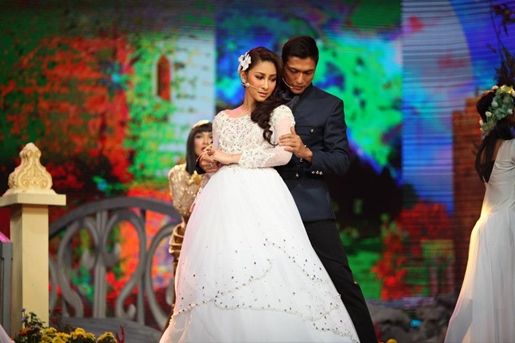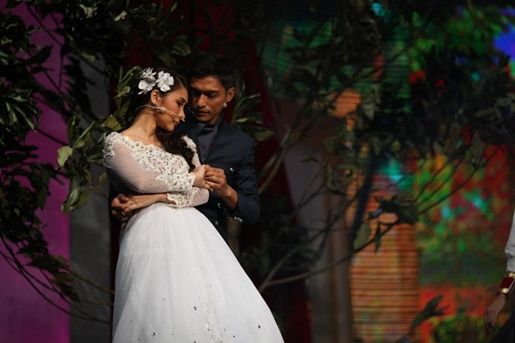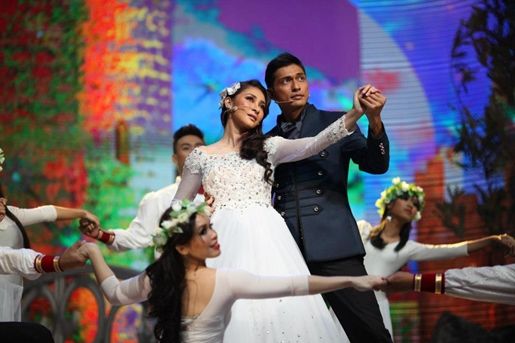by Jean-Michel Filippi
"Let's get back to the first centuries of the Common Era. Knowing that Chinese, Burmese, Lao and Thai are relatively new in the Southeast Asian landscape, the biggest part of the peninsula was peopled by Austro-Asiatic (or Mon Khmer) ethnic groups. This means that Khmer and related groups (Mon, Kui, Bahnar) were certainly the oldest inhabitants of the peninsula."
"The process ['Nam Tien' or Vietnamese southward expansion] was well defined by Léopold Cadière in 1911: "As soon as they feel themselves able, they drive off the first inhabitants, whether in a peaceful manner, by taking over the land, clearing it and "planting the bamboo" – the hedges that to this day still surround Annamese gardens and villages – or by violence, then they fight with the Chams, destroying their temples and mutilating their statues." In short, there was no room left for the Chams."
The Khmer empire, from the ninth to the 15th century, obviously didn't develop in isolation. But, looking at the map of Southeast Asia from a historical point of view, it's nevertheless clear that this political construction benefited from an unprecedented geopolitical quietness, at least until the 13th century. The Vietnamese hadn't even begun their march to the south, and the Thai state was made up of embryonic chieftainships.
Yet the exception that proved the rule occurred. In the year 1177, guided by a Chinese deserter, the Cham fleet sailed the Mekong river upstream and from Phnom Penh, the Tonle Sap. They took Angkor by surprise, plundering and destroying the town. They quickly withdrew and, from 1181, under the leadership of the future Jayavarman VII, the Khmers won the war against the kingdom of Champa, which was soon reduced to a vassal state of the Khmer empire.
For the Khmer empire, military recovery was one thing; spiritual recovery was something else. If the very heart of the empire could be so easily struck, there were spiritual causes that couldn't be ignored. Under the rule of Jayavarman VII, the Khmer empire was the theater of the most dramatic religious shift in Khmer history as the new religion became Mahayana Buddhism. It replaced the Hindu religion, which had proved unable to protect the empire. Hindu gods still existed, but were submitted to the Mahayana Buddha. The temple of Angkor Wat was still there, but was no longer the axis of the world; that was now the Bayon. Who were those Cham who were able to disrupt a mighty empire?
The beginning of a long history
If we look at a current map of peninsular and insular Southeast Asia, we notice no fewer than nine countries. But the borders between these countries don't tell us anything about the region's ethno-linguistic components. The situation has become more and more complicated over the centuries.
Let's get back to the first centuries of the Common Era. Knowing that Chinese, Burmese, Lao and Thai are relatively new in the Southeast Asian landscape, the biggest part of the peninsula was peopled by Austro-Asiatic (or Mon Khmer) ethnic groups. This means that Khmer and related groups (Mon, Kui, Bahnar) were certainly the oldest inhabitants of the peninsula.
There is, however, an exception: a large blot in what is now central Vietnam where another ethno-linguistic group dominates. This group, named Austronesian or Malayo-Polynesian, is composed of a number of peoples such as Jarai, Rhade, Koho and Cham who speak closely related languages that have nothing to do with the Austro-Asiatic group. This presence seems paradoxical. Austro-Asiatic languages are spoken on the mainland with the recent exception of Malay. As concerns Austronesian languages, they are spoken in the Pacific from Easter Island to Madagascar and from Borneo to Papua. So, another Cham exception? Yes and no, because we now know, thanks to the works of Bellwood and Thurgood that: "The Austronesian speaking group settled on the coast of Vietnam from an earlier homeland in perhaps Malaya or, more likely, Borneo, some time before 600 BC."
From tribes to kingdom
As for the presumably Khmer kingdom of Funan (1st – 7th century), our knowledge of Champa comes from Chinese sources that gave us an account of Lin Yi.
Lin Yi, also known by its Cham name Indrapura, was a Cham principality together with Amaravati, Vijaya, Kauthera and Panduranga, which stretched from the northern part of Annam (in central Vietnam) to northern Cochinchina (South Vietnam). All these principalities were Indianised states, and as such inherited from India state conception, art, religion (Hinduism and later Buddhism) and script. Cham script has the same origins as Khmer and Mon scripts.
By the fifth century, Champa (Lin Yi) was developed enough to raid Vietnamese settlements in what is now northern Vietnam with war fleet of more than 100 ships. Ancient Champa can be best understood through its artistic remnants from the fifth to the 15th century. We can still admire the temple of Po Nagar, near Nha Trang, or the site of Po Klaung Garai, near Phan Rang. As the coast was heavily bombed during the Vietnam war, we often have to content ourselves with drawings and old photographs taken by early French scholars who were the first to study Cham civilisation. Cham sandstone statuary can still be admired in the museum of Cham sculpture in Da Nang or in the Guimet museum in Paris. Beautiful sculptures in the round, bas-relief and the most remarkable haut-relief of Southeast Asia are still here to show the greatness of Cham civilization. From an artistic point of view, in Southeast Asia these Cham masterpieces can only be compared to Khmer statues in the National museum of Phnom Penh.
The loss of a kingdom
Nowadays, more than 80,000 Cham people still live in central Vietnam. Many of them still speak the Cham language and still worship Hindu gods, but the land inhabited by their ancestors is now but a ghost kingdom. They are what remain of a once-mighty kingdom that over 1000 years has faced the tenacity of the Vietnamese conquest. The history of Champa can be read in parallel with the Vietnamese march to the south (Nam Tien).
In the early century of the Common Era, the first Vietnamese state (Dai Viet, which roughly corresponds to current Tonkin) had already reached prosperity through the dyking-up of the banks of the Red River. The Vietnamese defeated the Chinese army in 938 AD, marking the end of 1000 years of Chinese domination; from then, a new independent Vietnamese state could launch its Nam Tien, which was soon to become the nightmare of Cham history.
The traditional warfare pattern in Southeast Asia generally aimed at conquering and dominating sparse populations, using their skills in irrigated rice fields, arts and crafts. Nothing of the kind happened in the Vietnamese Nam Tien. This Vietnamese expansion down south was intended as a populating colonisation. The process was well defined by Léopold Cadière in 1911: "As soon as they feel themselves able, they drive off the first inhabitants, whether in a peaceful manner, by taking over the land, clearing it and "planting the bamboo" – the hedges that to this day still surround Annamese gardens and villages – or by violence, then they fight with the Chams, destroying their temples and mutilating their statues." In short, there was no room left for the Chams. In 1471, Vijaya, the Cham capital was stormed by the Vietnamese. Therefore, it was not the end of Champa which was much more a confederation of principalities than a unified state. According to the Cham scholar Po Dharma, a lively Cham state existed in the south till 1835. In parallel with the Vietnamese progression down south, the Cham fled overseas, to the isle of Hainan, to the Malay Peninsula and Sumatra and to Cambodia.
The early history of the Cham in Cambodia is far from being clear. To begin with, were the Cham Muslims at the time of their emigration to Cambodia? Scholars have pointed out evidence that Champa had contacts with the Muslim world as early as the 9th century. A group of Muslim Chams are still living in Central Vietnam although they are a minority; there the majority still goes on worshipping Hindu religion. It is then plausible that prior to take refuge in Cambodia a part of the Cham population had already converted to Islam. The fact that today all the Cambodian Chams are Muslims led most of scholars to the conclusion that the conversion of the majority of Chams actually took place in Cambodia. The Chvea (literally Javanese), a large Muslim population, were already living in Cambodia in the 15th century; their origin is unclear as nowadays they all speak Khmer and don't have a language of their own. It is probably to their contact that the Chams converted to Islam.
The Cham were given by the Udong Monarchy (1601 – 1865) titles and land to settle. After the fall of Vijaya, no less than 3 big migrations to Cambodia occurred: in 1692, 1796 and 1830 – 1835, each of them corresponding to a major Vietnamese push down south. The Chams then deprived of their country were, as they often say, living in someone else's house. This doesn't mean that they had renounced having their own state, as their history in Cambodia was punctuated with several attempts to build a Cham state. The last of these short-lived attempts took place during the reign of King Ang Duong (1847-1860) and was severely repressed.
Modern times
It was at the time of the French protectorate (1863-1953) that modern Cham studies were pioneered in Vietnam and in Cambodia by scholars such as Aymonier and Cabaton who were also administrators. French protectorate also marks the beginning of a marginalisation of Cambodian Chams, who were not enthusiastic about sending their children to French schools. French schooling was broadly viewed as a threat to Muslim identity. Without the adequate degrees, the Chams could not take part in political and administrative life.
Sihanouk's years (1955-1970) defined a new attitude towards the Chams who were named "Khmer Islam". The implications of this have been well perceived by William Collins when he wrote that: "Anyone using the term "Khmer Islam" is aware that the Cham-Malay community is ethnically different from the Khmers. They speak languages related to Malay, they look abroad for their ancestral homeland. They vigorously maintain their distinctive identity, separate from Khmers, by professing Islam, which prohibits intermarriage with non-Muslims. This separation is reinforced by numerous ritual practices that contrast sharply with those of the Khmer majority community. Again, the indelible difference implied by Islam makes assimilation to Khmer ethnicity an impossibility, which suggests that the term "Khmer Islam" points to a feature of the Cambodian nation, that it includes Muslims among its diverse peoples."
The Khmer republic (1970-1975) was the theatre for the emergence of new geopolitical conception in which the Chams happened to have an interesting part to play. In the 1940s, the French authorities had promised to grant autonomy to the "Montagnards", ethnic groups living in the highlands of Vietnam. There was even a secret project of independence. In such a case, what is today Vietnam would have been split into at least two parts: coastal Vietnam and highlands. Due to the first Indochinese conflict, which ended with the French defeat at Dien Bien Phu, these projects went unheeded.
The very idea was revived by the United Front for the Liberation of Oppressed Races (FULRO). Born in 1964, certainly with the support of the American Special Forces, FULRO has been playing for 10 years the part of a real army at the service of the South Vietnamese minorities. FULRO is a real ideological hodgepodge with demands for autonomy or independence, new borders… Republican Cambodia displayed a real interest in the FULRO through his high ranking Cham officers and particularly General Les Kosem. Also known by his war name Po Nagar, this outstanding character had already become famous through the creation of the Champa Liberation Front (CLF) in 1950s. He had also been a key figure in the setting of the FULRO and in establishing official links between the Khmer Republic and Cham nationalists. For him the second Indochinese conflict was an ideal opportunity to recreate a Cham state and in 1971 a Cham delegation representing the newly proclaimed Cham state was welcome in Phnom Penh in great pomp. At that time a new Khmer republican map was drawn with a new frontier between Cambodia (including Cochinchina) and Champa.
This last attempt to revive Champa was but short-lived. In April 17 1975, Khmer Rouge entered Phnom Penh and the 3 years 9 months and 20 days which were going to follow (Democratic Kampuchea) are amongst the most terrifying episodes the 20th century can offer. More than two million Cambodians lost their lives because of starvation, lack of medicines and executions. According to Craig Etcheson, execution is believed to have accounted for 30 to 50 per cent of the death toll. The Khmer Rouge killed about 125,000 Chams, which amounts to half of the Cambodian Cham population. Most of scholars agree on these facts. What is subject to disagreement lies in the analysis of the perpetrators' motives. Were the Chams peculiarly targeted as a religious or ethnic group to create an ethnic uniformity? In such a case, Democratic Kampuchea (DK) could be accused of having implemented genocide. A second interpretation is that DK implemented a typical communist mass terror and that the Cham didn't suffer more than the other Cambodians. Cham lifestyle was targeted because it was seen as counter-revolutionary; Islam entered the category of reactionary religions and the links of solidarity within Cham communities were perceived by DK as early as 1973 as a threat for the new order it wanted to implement.
The People's Republic of Kampuchea (PRK) which followed DK after the Vietnamese armed intervention in 1978-1979 treated the Cham community with special tolerance. The emphasis on the sufferings of the Cham during DK was used by the PRK to stress the differences between the new "true" socialist regime from the radical DK approach to socialism. According to the text "L'Islam au Kampuchéa" published in 1987, the Chams would have entirely disappeared if DK had not been overthrown. There is now a population of 300.000 Chams in Cambodia which roughly accounts for 70% of the total Cambodian Muslim population.
Cham identity in Cambodia today
Although there are Cham groups and cultural associations abroad which go on claiming the ancestral Cham territory in Vietnam, there are nowadays in Cambodia no more hopes about Champa as a geographical entity or a Cham state anymore.
Cham identity is nevertheless matter of controversy in Cambodia. The way Cham people practice Islam is a very interesting example. The Islam of the Cham population can be roughly divided into 2 groups. On the one side, the Cham Sot who account for 10% of the Cham population (30.000 people) live in Kompong Chhnang, Pursat and Badtambang provinces.
A very unorthodox approach to Islam Cham Sot or "pure Cham" is the way they call themselves as they are accused by the other groups to practice very heterodox traditions. They only pray on Friday as opposed to the normal 5 times a day prayer. They still go on writing with the former Cham script as opposed to Jawi which is Arabic script originally adapted to write Malay.
Other infringements have been noticed by the researcher Agnès De Feo: only initiated people can pray in the Mosque, the Hajj (pilgrimage to Mecca) is not compulsory and can be dreamt up. They organize once a year in September a festival in their Udong Mosque to celebrate on the same day the Imam San they venerate like a saint and the birth of the Prophet; they consider themselves as the followers of Imam san. The celebration of the birth of the prophet and saints is considered as heretic by wahhabism and Tabligh which have exerted a growing influence on Cambodian Cham's Islam.
On the other side, there are the Chams who practice a more orthodox approach to Islam. This approach can't be easily structured and must be considered as a continuum. There is of course a clear cut phenomenon which is the growing influence of Salafism with its Wahhabit variant and Tabligh. These two approaches do not differ on the essentials: the cause of the decadence of Islam is mainly due to the fact that the "true Islamic message" has been forgotten. This "true Islamic message" is restricted to the religious practices of the time of the prophet and the famous pious followers (Salaf Salîh) and implies de facto to choose to overlook 14 centuries of Muslim history. In such a conception, there is no possibility of an approach to Islam which would tolerate the integration of local cultural practices; in clear, the frontier which separates the true religion from impiety goes through the Muslim community.
There is nevertheless another extremely interesting border line which hasn't been given yet the attention it deserves. Before the war (1970), many Cham people had built their identity on a combination of Islam, Cham language and Cultural inheritance from Champa. In such an approach Islam is but a part of Cham Cultural identity. Nowadays, there are still Cham people who define their identity through Cham culture even if this concept is often ill defined. But more and more Cham people tend now to rely only on Islam as the main source of identity. An ethno-linguistic survey conducted in 3 Kampot region villages along the road from Kep to Kampot illustrates very well this fact. The first village centred on the Les Kosem Mosque doesn't really differ from the others from point of view of religious practices. The difference lies somewhere else: precisely in the fact that Cham language is still practiced in the first village and a number of families still teach it to their children. People talk proudly about their difference. In the 2 other villages, the trend is else as almost no one can speak the language.
In many cases, the only remnant of Cham language is curiously the use in a Khmer sentence of the Cham first person pronoun "lun" meaning "I, me". In these villages, to be Cham will simply means in the end to be a Muslim. No one can predict what is going to happen even in the near future.
We have some reasons to be pessimistic about the survival of Cham language in Cambodia, not to talk about Cham culture which, as we have seen, can't be easily defined in the present Cambodian situation. Language will of course survive in a number of islets but maybe not as an active component of Cham identity. We can only hope that this exceptional linguistic, historical and cultural patrimony will remain alive and won't be only reduced to a museum-like display of a dead civilization.
Jean-Michel Filippi
--
Posted By School of Vice to KI Media at 9/16/2012 05:26:00 AM


















